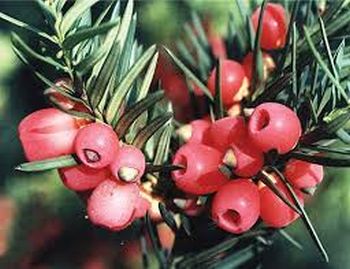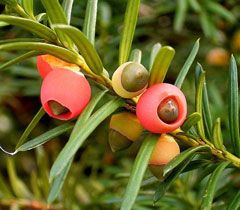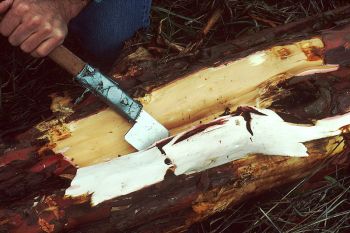The Himalayan Yew constitutes one of the many species of the yew tree that usually grows in the temperate zones all around the world. But it is very unfortunate that today yew has become an endangered species.
The barks of the yew tree yield a major component of anti-cancer drug Taxol, viagra sale which is widely being exploited for its medicinal value.
Taxol is a very effective anti-cancer drug mainly used in chemotherapy sessions to fight against breast and ovarian cancers. This life saving drug was discovered for the first time in the Pacific Yew and ever since it has been widely used to successfully treat cancer.
The Himalayan Yew – Plant Description

The Himalayan Yew has needle shaped leaves, pills which are dark on the upper surface with a yellowish green tinge on the lower side. These trees have separate male and female plants, which grow to a height of about 6 mt. They require absolute conditions for germination, ranging from mild to cool temperatures with partial sun and shade situation. Usually the male trees yield more Taxol in comparison to the female trees.
Where In Himachal Can You Find the Himalayan Yew

The Himalayan Yew is found to grow along with Kharshu Oak, spruce and silver fir at an altitude of 2,800m to 3,500m.
Shimla, Kullu, Mandi, Kinnaur and Chamba are amongst the few towns in Himachal, where you are sure to spot this evergreen tree.
History of Himalayan Yew

The traditional medicine, Taxol was at first extracted in minute quantities from the bark of the Pacific Yew (Species: Taxus bravifolia) in the early 1960’s. Later a seasoned drug company managed to successfully obtain it from the leaves of the Himalayan Yew tree.
As a result, they were able to obtain rich quality Taxol at a fairly cheap price. Also the process of extracting Taxol from the leaves rather than the tree barks was less damaging to the trees and to the overall environment.
How to Grow Himalayan Yew

It should be noted that the growth of the Himalayan Yew is a very slow and therefore its regeneration through seeds is arduous. Vegetative propagation is another method that is applied for the quick growth of the plant. This process involves growth of individual plantlets without culturing seeds or spores and simply cutting the plant to augment new growth.
The G.B. Pant Institute of Himalayan Environment and Development at Almora have been successful in generating the growth of the Himalayan Yew by adopting this technique.
Himalayan Yew – An endangered species

Though the Himalayan Yew carries crucial medicinal properties and is extremely useful to us – maintaining its health is not an easy task. Extensive exploitation of these trees has posed a serious threat to its existence. Due to consistent debarking and looping, the Himalayan Yew is exposed to continuous vandalism.
Precautionary steps should be taken to protect the Himalayan Yew and also to fulfill the purpose of Convention of International Trade of Endangered Species (CITES) 1993. The multinationals involved in the trade should be asked to pay a hefty royalty to the forest departments. And it should be made mandatory that extraction of Taxol should only be limited to the leaves without damaging the barks of the trees.

taxol obtained from yew is successfully used to treat some cancers. its also biggest selling anti cancer drug in world.
we need to protect preserve and plant this tree